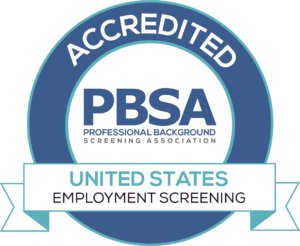According to a publication by Embroker, a shocking 75 percent of employees admit to stealing at least once from their employer. While not every instance of workplace theft equates to substantial sums of money lost, the collective effect is significant. Total crime in the workplace costs organizations an estimated $50 billion per year.
The question is, what can be done?
Fraud Has a Backstory
It’s unlikely that an honest, well-adjusted, and happy employee would show up to work one day and impulsively decide to defraud their employer. Such actions almost always require premeditation and motive.
Commonly, workplace fraud finds offenders in one of two categories: entitlement and general dishonesty. Let’s take a quick look into each.
Entitlement
Perhaps, the “well-deserved” raise or promotion wasn’t offered to a particularly eager employee. Maybe years of hard work aren’t paying the dividends one had hoped for. Employer-employee dynamics may also be casting questionable shadows, suggesting possible unfair treatment, which empowers a disgruntled employee in their efforts to justify wrong-doing.
The reality is many employees feel entitled to more— perhaps reasonably so, in many cases. But such entitlement can influence behavior over time, leading some to commit workplace crimes.
Employee entitlement is becoming more and more common among the rising generations. This shouldn’t be attributed to character flaws as much as culture. Some entry-level fast-food positions are now beginning to exceed the $15/hr mark nationwide, skilled labor is pushing a $20/hr average, and general living costs are rising. This changing landscape has many working professionals questioning how their employers determine their value.
General Dishonesty
Though we wish it weren’t true, some employees are dishonest or have lapses of judgment where honesty takes the back seat. When an opportunity arises to take illegal action, some are more inclined to do so than others.
In this category, an individual is willing to calculate and repeat criminal behavior for an extended period.
US businesses lose up to $110 million a day due to employee-related crimes.
Identifying Fraud
This part can be a bit tricky. Let’s start by outlining what employee fraud may look like within your organization:
Inaccurate employee reimbursement requests- Business trips, company meals, or events can provide opportunities for one to give a false accounting of expenses.
Unjustified equipment or supply expenses- Baking in personal fees to business transactions can be easier for those who have access to expense accounts.
Outside transactions- This includes stealing inbound leads generated by the employer and servicing clients as their own.
Double-dipping- This includes employees who receive unauthorized kickbacks from partners and affiliates.
Time theft- Using sick days while healthy, shirking responsibilities, taking long breaks, and abusing work-from-home policies can all be examples of time theft. This is fraud too.
Suppose a particular employee is acting strange or secretive, is the cause of financial inconsistencies, isn’t present when needed, or is the subject of frequent complaints. In that case, you may want to consider looking into things a little deeper. In many cases, intuition tends to have a somewhat reasonable basis.
Mitigating Fraud
There are three straightforward steps employers can take to reduce the incidence of workplace theft significantly:
Implement Internal Controls
Plans and programs that safeguard your internal assets and maintain the integrity of your finances are essential. This includes reliable documentation, reliable accounting practices, and frequent audits.
Promote a Positive Work Environment
Employees who are happy within their organization are less likely to betray it—promoting a healthy company culture where employees’ concerns listen. And addressed can go a long way in mitigating harmful behavior.
Know Your People
Knowing your employees is paramount when structuring, sustaining or scaling a healthy organization. An excellent way to accomplish this is by implementing consistent and comprehensive screening practices. Such practices can include criminal background checks, credit checks, drug testing, verifications, and more, all of which will provide valuable insights, helping you better avoid potentially troublesome hires. And the efforts should begin before a hiring.
All we can do is our best to keep the workplace safe, but with the right resources, our best can go a long way.
To learn more, visit us online.










